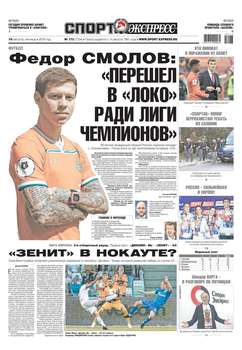Children, parents, games
Without a keyword
An article about the importance of games with preschool children.
A child is a universe that develops according to certain laws. Nature “conceived” a person in such a way that he has an amazing ability – activity. Preschool children spend most of their time playing games. Sometimes it seems to adults that when playing, children waste time on useless activities, because the game is perceived as an idle pastime and pampering. In fact, the game is the leading activity for preschoolers. This means that it is the game that is necessary for the development of children of this age.
The developmental impact of play on a child is impossible without the participation of an adult. The younger the child, the more involvement in the process of the game is required from parents. When a baby is just starting to play, mom and dad are his favorite playmates. Parents can initiate games themselves or support the child's initiative. At an older age, parents can act as third-party observers, assistants and consultants. In any case, an adult acts as a guide to the world of the game. Through the game, adults pass on to the child a body of knowledge, skills and abilities, a system of historical and universal values.
During the game, the child develops physically, mentally and personally. Let's take a closer look at how games affect the development of a child.
- The development of the cognitive sphere. During the game, the child actively learns the world around him, gets acquainted with the properties of objects, their purpose. This aspect of the influence of the game on development is manifested at a very early age, when the child does not play yet, but only manipulates objects: puts cubes one on top of the other, puts balls in a basket, tries toys “on the tooth”. Along with the assimilation of new knowledge about the world around, in the process of the game, the development of cognitive processes takes place: attention, memory, thinking. The skills formed at an early age to concentrate, analyze, memorize information will be very useful for a child to study at school;
- Physical development. During the game, the child masters different movements, improves his motor skills. All children love outdoor games: they run, jump, tumble, kick the ball with pleasure. In such games, the child learns to master his body, acquires dexterity and good muscle tone, which is very important for a growing organism;
- Development of figurative thinking and imagination. During the game, the child endows objects with new properties, models his own imaginary space. The child himself at this moment understands that everything is happening for fun, but when playing, he really sees in the leaves – money, in the pebbles – potatoes for soup, and in the damp sand – dough for fragrant pies.The development of imagination and imaginative thinking is the most important aspect of the influence of the game, because the child has to make non-standard decisions in order to realize the plot of his game. True, recently this feature of the game has been exterminated by manufacturers of children's toys, creating a wide variety of play sets for all occasions. The most realistic children's kitchens, laundries, sets for playing in the store deprive children's play of an element of fantasy;
- Development of speech and communication skills. In the process of a role-playing game, the child constantly has to pronounce his actions, act out dialogues between the characters of the game. Games in the company of other children contribute not only to the development of speech, but also to the development of communication skills: children need to assign roles, agree on the rules of the game, and maintain contact directly during the game. The child learns not only to negotiate, but also to follow the accepted rules;
- Development of the motivational sphere. Role-playing games are based on the fact that the child imitates an adult. During the game, the child, as it were, tries on the role of an adult, tries to perform his functions at the game level. Such a game forms the child's motivation to become a truly adult, that is, to get a profession, earn money, start a family. Of course, in order for the “correct” motivation to form during the game, the child must have a positive example of adults before his eyes;
- Development of moral qualities. Although the plots of children's games are fictitious, the conclusions that a child draws from game situations are real. The game is a kind of training ground where the child learns to be honest, courageous, decisive, and benevolent. Of course, for the formation of moral qualities, not only children's play is needed, but also an adult nearby, who will help to see the game situation more deeply and draw the right conclusions;
- Development and correction of the emotional sphere. During the game, the child learns to sympathize, support, regret, express sympathy. Sometimes it happens that a child’s emotional problems “break through” through games: fear, anxiety, aggression. In a playful way, you can give vent to these emotions and live with your child difficult situations for him.
Unfortunately, in recent years, real spontaneous children's play has been supplanted by play-based learning, computer games or time spent watching TV. It must be understood that neither one nor the other activity is, in essence, the game that gives so much for the development of the child. Of course, real and "high-quality" children's games are not always convenient for adults, because these are huts made of pillows and blankets, constructor cities throughout the apartment and a mess. However, you should not limit the child in his imagination and games, because they say correctly that there is a time for everything, and childhood is a time for playing.A child who has been allowed to play enough will be better prepared for the transition to a new step in his development. And one should not indulge in illusions that the child's abilities will develop on their own, without the help of adults. Play together – it heals relationships.
Various games for preschool children are described below.
FINGER GAMES
Finger games-exercises for preschoolers, or finger gymnastics, have the following goals:
- speech development;
- formation of the correct sound pronunciation;
- ability to speak quickly and clearly;
- development of fine motor skills, coordination of movements;
- development of memory, attention; the ability to coordinate movement and speech.
All exercises are repeated several times.
1. One, two, three, four, mice lived in the apartment
You all know the rhyme: “One, two, three, four, mice lived in the apartment. They drank tea, broke cups, they said in Turkish: "Chabi-chilabi, chilabi-chabi-chabi."
And the boys-fingers know how to beat this counting rhyme. Do you want to learn? Repeat after me.
- One (clap your hands).
- Two (the left hand is in front of the face, the palm looks to the right; the right hand is clenched into a fist resting on the palm of the left hand; the elbow of the right hand is at shoulder level).
- Three (clap hands).
- Four (the right hand is in front of the face, the palm looks to the left; the left hand is clenched into a fist resting on the palm of the right hand; the elbow of the left hand is at shoulder level).
- Lived (clapping hands).
- Mouse (the cam of the right hand rests on the palm of the left).
- Na (clap your hands).
- Apartment (the cam of the left hand rests on the palm of the right).
- They drank tea (the hands of both hands are connected by their sides, collected in a cup).
- Cups were beaten (palms sharply diverge in different directions, the front side looks down).
- They spoke Turkish (arms are crossed to the elbow with smooth, wave-like movements of the hands).
- Chabi (the pads of the thumbs and forefingers of both hands touch once).
- Chilyabi (the pads of the thumb and middle fingers meet once).
- Chelyabi (there are pads of the thumb and ring fingers once).
- Chabi-chabi (there are pads of the thumbs and little fingers of both hands twice).
Note. Perform arm movements with sufficient tension. While connecting the fingertips, clearly pronounce the words “chabi-chilabi, chilabi-chabi-chabi”.

2. Good morning, hello Ivan
The fingers are closed, slightly splayed, the palms are joined.
- Good morning, hello Ivan (thumbs cross from right to left).
- Good morning, hello, Stepan (cross index fingers).
- Good morning, hello, Sergey (middle fingers cross), etc. (all fingers).

3. Hide and Seek
Show your right hand, left hand.
Now try this task.
The left Stepan will hide in the right fist.
The right Nikitushka will hide in the left fist.

4. Flower
Each of you hands turned into a flower. Petals are closed, tightly closed.
- Early in the morning it is closed (the hands are in their original position).
- But closer to noon (the palms move away from each other, the pads of the thumbs are pressed to the ends of the index fingers, the hands resemble a half-opened bud).
- It opens the petals, I see their beauty (the hands at the wrist are connected, and the fingers smoothly diverge in different directions, resembling an opened flower).
- By evening, the flower closes the corolla again (close your fingers – an unopened flower).
- And now he will sleep (hands in the starting position).
- Until the morning, like a chick (put your hands under your cheek – an imitation of sleep).

5 Octopus Tentacles
The fingers are clenched into fists and turned towards you. We pronounce words clearly!
- The octopus has many legs (alternately, starting with the big one, straighten all the fingers – 1st position).
- He needs all of them (fingers are bent into a fist in reverse order – 2nd position).
- Replace his hands (1st position).
- They are very dexterous (2nd position) (turn the fists towards you and open them at the same time).

OUTDOOR GAMES
"Lion Hunt"
“Now I invite everyone to hunt. This hunt is special, but like any hunt, we need attention and quick reaction. Let's hunt the lion.
I am your guide. For safety reasons, all hunters must repeat after me the words and movements:
We hunt the lion, we are not afraid of him (marching),
We've got a big gun (loading the gun)
And a red-hot sword (cutting the air obliquely).
Oh what is it?
Swamp.
Can't bypass it
Do not crawl under it
Do not fly over it –
The road is straight ahead (they walk through the swamp: mumble their lips, depicting the sound of the swamp).
We hunt the lion, we are not afraid of him (marching),
We've got a big gun (loading the gun)
And a red-hot sword (cutting the air obliquely).
Oh what is it?
Desert.
Can't bypass it
Do not crawl under it
Do not fly over it –
The road is straight ahead (here the palms are one on the other, depicting the rustle of sand).
We hunt the lion, we are not afraid of him (marching),
We've got a big gun (loading the gun)
And a red-hot sword (cutting the air obliquely).
Oh what is it?
Reeds. (they push the reeds apart with their hands, make the sound "shuh, shuh").
We hunt the lion, we are not afraid of him (marching),
We've got a big gun (loading the gun)
And a red-hot sword (cutting the air obliquely).
Oh what is it?
So soft, so big
And what ears does he have, and what kind of mustache does he have,
OH.
THIS IS A LION.
A-A-A. (everyone yells. Everyone pretends to be running back. They tap their knees with their palms – they “run”) puff, puff. (they run through the reeds. They knock on their knees with their palms – “run”, rub their palms together, depicting the rustle of sand – “run through the desert”. They knock on their knees with their palms – “run”, mumble their lips, imitating the sound of a swamp. Knock on their knees – "run").
Come running!
We hunted the lion
We were not afraid of him
We have a huge gun and a red-hot sword (they wipe sweat from their foreheads).
Well done!!”
"Scouts"
The chairs are arranged in any order. One child (scout) walks across the room, avoiding chairs.Another child (commander), remembering the way, must lead other children (detachment) in the same way. The new "scout" paves a new path, and the "commander" leads the entire detachment along this path, etc.
"Crocodiles"
Materials: Sheets of A4 paper, one less than the number of participants, two rattles.
Instruction: “Imagine that you and I are in a swamp in which frogs and crocodiles live. We, the presenters, are crocodiles. While we sleep, we rattle rattles. You are frogs. While the crocodiles sleep, you move freely between the leaves of water lilies (sheets of paper on the floor). As soon as the crocodiles wake up, the rattles will subside. The frogs should jump onto the water lily leaves. Whoever did not have time will be eaten by the crocodiles, and he will be out of the game. The game continues until there are no frogs left. Started!”.
The game ends when the last frog is caught.
"Bees and snakes"
Before the start of the game, you need to divide into two approximately equal groups. Some will be "bees", others – "snakes". Each group chooses a “king” for itself: “king of bees” and “king of snakes”, respectively. Both "kings" go out the door. At this time, the host hides two items: one of them must find the “king of bees” – this is “honey”, the other “king of snakes” is the “snake egg”. “Bees” and “snakes” help their “kings” – “bees” buzz: “zh-zh-zh-zh”, “snakes” hiss – “sh-sh-sh-sh-sh”. The closer the “king” comes to the cherished object, the louder the group informs him about it. The winner is the group whose "king" found the item faster. Talking during the game is prohibited!
OUTDOOR GAMES
"Rain"
An adult draws with chalk on the pavement two circles-houses for himself and the child. If an adult says “Sun”, then they run and play with the child. Have fun around the houses. At the word "Rain" you need to quickly run into the house, squat down.
"Fox, where are you?"
Children stand in a circle with their backs turned to the center of the circle and their eyes closed. The host walks in the center of the circle and, imperceptibly for the guys, with a pre-set touch, appoints someone as a “fox”. The rest are rabbits. On a signal, I keep opening my eyes, but no one knows where the "fox" is. The host calls 2 times: “Fox, where are you?”. Only for the 3rd time the "fox" answers: "I'm here" – and rushes to catch the "hares". A "hare" squatting down cannot be caught. Caught "hares" are out of the game.
"Ocean is shaking"
The host says: “The sea worries once! The sea is worried two! The sea is worried three! Marine figure freeze in place! While the facilitator says these words, the players move, depicting waves with their hands. As soon as the host stops, the players freeze, depicting various figures. The one whose figure is not guessed loses. Whoever loses becomes the leader. What does this game develop? Imagination, spontaneity, artistry.
"Classics"
We draw cells on the asphalt. You will need a bit (pebble, round shoe polish box, etc.). We write numbers from 1 to 10.We jump on one or two legs, pushing the bat in a certain square. Return back in the same way. What does this game develop? Accuracy, accuracy, coordination.
"Edible – Inedible"
Players get into the circle. The presenter gets up in the center and throws the ball to any participant, pronouncing the word. If this is "edible", then the participant must catch the ball. If "inedible," repel the lead. Gradually increasing the tempo. If someone is mistaken, gets into the center instead of the lead. What does this game develop? Attentiveness, sense of humor.
"Cat and mouse"
Playing, holding hands, make up a circle, except for two, of which one – the mouse – becomes in the center, and the other is a cat – behind the circle.
Everything is quickly circling, clutching up and raising them up. "Cat", meowch, jumping near the circle, trying to find a pass; But when she fits, the hands on this side are descended. Without losing time, the "cat" tries to catch the circling surprise and find a place where protection is weaker. But even if she jumbles into a circle, "Mouse" give a passage from the other side; "Cat" is trying to keep in a circle now. At the same time, the circle should constantly spin, and the "cat" will soon find a passage. She runs for the mouse, and she saves, diving in a circle.
A coarse "cat" always caught a "mouse"; Then both join the playing, and instead they prescribe another pair.
"Boyar"
Participants are divided into two teams. They are built face to each other in two ranks, hard holding hands at a distance of 10m. One team begins: "Boyar, revole the gate. Give us a bride forever! " The one who chooses the "Bride" from the runway is trying to break through the chain of the enemy. If he managed, returns to his team. If not, joins the opponent's team. Further continues the loser team. Wins the team in which there will be more participants. What does this game develop? The ability to play in the team, the ability to fight one "against all".
And as a child, we played in the "Hyperships", "bounced", "Cossacks-Robbers", "Colecko", "River".










